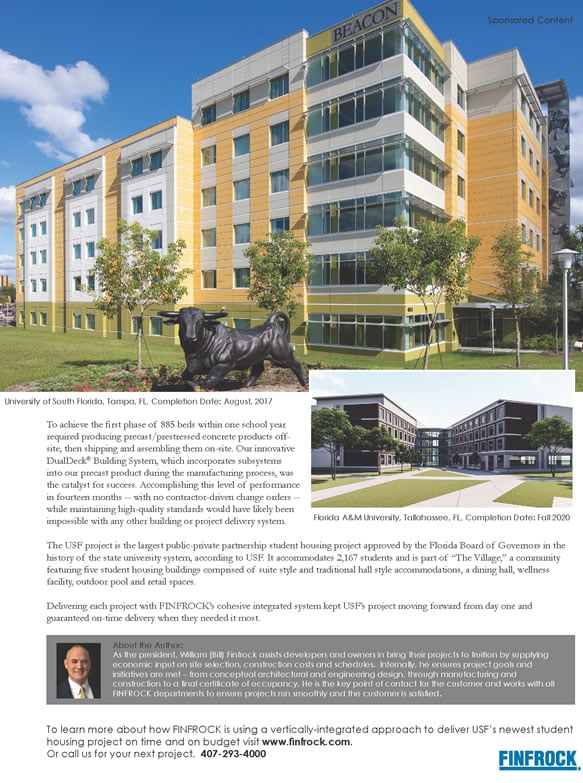Harris Corp. has seen lots of its products launched into space over the decades, from imaging systems to weather sensors to ultralight antennas that are made out of material as sheer as pantyhose and unfurl once in orbit. Those products, however, have always been components that were part of someone else’s satellite.
Sometime in the next few months, the company will mark a milestone: A rocket will carry a cube-shaped, briefcase-sized satellite into orbit that Harris built, top to bottom — the first all-Harris device in the company’s history.
The company, which will operate the satellite from a ground station in Palm Bay, calls it a proof-of-concept project — a chance to prove to prospective customers that Harris can design, build and manage an entire satellite system.
Harris sees a big future in small satellites. The federal government, wary of the cyberthreat posed by Russia, China and other actors, is moving away from a small network of large, multisystem satellites to a larger array of smaller, single-purpose craft. That has some defense-industry giants stampeding into the “smallsat” space: Northrop Grumman bought Orbital ATK, Lockheed Martin is building a satellite factory in Colorado, and Airbus has tied up with OneWeb.
Harris is betting it can beat them all. “I think we’re at the forefront of the movement,” says Bill Brown, Harris’ CEO. Many of the government’s other prime contractors “have geared their business model around these large, multibillion-dollar exquisite systems. They’re not as nimble or as agile as Harris.”
The company’s satellite also reflects a new overall strategy at Harris, Florida’s 19th-biggest public company. Since Brown took over seven years ago, Harris has sold off most of its commercialfocused businesses and has recast itself primarily as a government contractor. The new, more narrowly focused company is generating more cash than ever — analysts expect Harris to have $1 billion a year in free cash flow starting this year. And the company is reinvesting more of that cash than ever into research and development — Harris’ R&D spending has grown nearly 50% since 2012 — and toward new programs like its first satellite.
The new approach comes with plenty of risk. In doubling down on government contracting, Harris has reversed course on years of work to diversify its portfolio. The company relies more than ever on Uncle Sam; three out of every four dollars it earns come from the U.S. government. Harris itself says it is at a “critical inflection point” in its 123-year history.
Plenty of defense experts like what they see so far.
“As we look to next year and beyond, we see a technology-rich, high-margin, cash-generative company that is very likely to see top-line acceleration,” analysts at Goldman Sachs wrote in a note to its clients earlier this year. “We think HRS (Harris) has the potential to grow earnings faster than the rest of the defense sector the next 3-5 years.”
Far different
In some respects, Harris, which is based in Melbourne and also has significant operations in Palm Bay and Malabar, looks almost exactly the same as it did when Brown arrived in fall 2011. During the company’s fiscal 2011, which ended just a few months before Brown took over as CEO, Harris employed roughly 17,000 workers in three principal operating segments, which together turned a profit of a little less than $600 million on sales of $5.9 billion. Eight years later, the company finished fiscal 2018 with 17,500 workers in three segments that together turned a profit of a little more than $718 million on sales of just under $6.2 billion.
But Harris today is a different company. Since 2011, the company has shed half a dozen major businesses that generated more than $2 billion a year in combined revenue. Harris no longer builds communications systems for the energy and maritime industries, for example. It no longer operates networks for the health care industry or manufactures airframe components for the defense industry.
Meanwhile, Harris has expanded its lines of communications systems built and operated for government customers. The company’s big move came in 2015 when it acquired defense contrac-tor Exelis — whose areas of expertise overlapped with many of Harris’ own, including positioning and navigation sensors, air-traffic management and image processing and distribution. The nearly $5-billion cash-and-stock deal was, at the time, the largest defense industry merger in nearly two decades.
Today, roughly half of all of its business comes from the various military branches and agencies within the U.S. Department of Defense. Harris’ biggest customer is the FAA, which is worth more than $500 million in revenue a year to the company.
“We got out of businesses where we just didn’t have any core knowledge,” Brown says. “For example, we were in a commercial health care business. We got into the business thinking that the skills that you have in developing an IT system for the VA translates into a commercial hospital chain like Kaiser Permanente. The fact is they’re night and day. They don’t translate at all.
“When you get a business with 17,000 employees and you buy something that’s pretty far afield and none of your 17,000 employees are experts at that field, you always get into trouble.”
Politics and persuasion
The 55-year-old Brown was, in some ways, a surprising choice to lead the transformation. Harris’ board hired him from United Technologies, where he had spent 14 years primarily on the commercial side of the company, overseeing everything from mergers and acquisitions to the company’s fire-and-security division. The board liked his experience in non-defense businesses; Lewis Hay III, Harris’ lead independent director, noted at the time that both United Technologies and Harris served “commercial and government markets.”
It didn’t take Brown long to decide the company needed a different approach. “Within the first year, I came to the conclusion, with a lot of strategy work that we did as a company and with the board, that we had to reposition ourselves back to our core capabilities.”
The shift was at times abrupt. Harris sold the commercial health care business in July 2015, just four years after buying it. And when it sold its communications business for the energy and maritime industries, it did so for nearly $150 million less than it had paid for the business seven years earlier.
The company’s new approach carries an obvious danger. “Domestic fiscal pressures are the most prominent downside risk,” analysts at Citigroup warned in a note to investors earlier this year.
But Harris’ timing has proven fortuitous so far, as a Republican White House and Congress ramp up defense spending after budget cuts during the Obama administration. Harris isn’t alone. Across the defense industry, executives are crowing about the outlook for military spending.
“This administration is intent on addressing the modernization issues. And, consequently, I do believe they are going to work hard to get some of these new activities underway here over the next couple of years in particular,” Northrop Grumman Chairman and CEO Wes Bush told analysts on a company earnings call earlier this year.
“I have to tell you that this is the most exciting time I have seen in my 30-plus years in shipbuilding,” Huntington Ingalls Industries President and CEO Mike Petters added on another company earnings call.
Harris has taken extra steps to make sure it claims as big a slice of the pie as possible by beefing up its presence in Washington. Brown reorganized Harris’ government relations operation so that Tania Hanna, a former Federal Communications Commission attorney who oversees Harris’ federal lobbying, now reports directly to him.
In addition, Harris has poached experienced lobbyists from rivals Motorola and Raytheon and hired a former staffer to the now-retired U.S. Sen. Barbara Mikulski, a Maryland Democrat who at one point chaired the Senate Appropriations Committee. Other company lobbyists have cycled back into public service, including a former aide to U.S. Sen. Bill Nelson who is now a staffer on the U.S. Senate’s Commerce, Science and Transportation Committee, and another former congressional aide who now works for the federal agency that advises the White House on telecommunications and information policy issues.
The company also has increased its spending on politics and persuasion. Harris has already donated more than $930,000 to federal politicians and political groups during the 2018 election cycle, according to the non-partisan Center for Responsive Politics; that’s a more than 50% increase over the $600,000 Harris donated during the entire 2012 cycle. And the company is now spending more than $2.5 million a year lobbying the federal government — including $4 million in 2014 alone — more than double what it was spending a decade ago.
The lobbying blitz has already paid dividends. Working with allies in the Department of Defense and Congress — including Senate Democratic leader Chuck Schumer of New York, where Harris’ tactical radio business is based — Harris successfully got the Army to open up some enormous hand-held radio contracts that had been held by rivals General Dynamics and Rockwell Collins. The result: Harris won a share of a 10-year, $3.9-billion contract from the Army for one kind of radio and a 10- year, $12.7-billion contract for another. The radio orders are a big reason some Wall Street analysts are upbeat about Harris near-term future.
“It’s important, as a government contractor, that we have a voice in how budgets are set and legislation is passed,” Brown says. “So I’m spending a lot of my time working very closely with legislators from the state of Florida as well as elsewhere around the country.”
Satellites and robots
Brown’s other big priority is research and development. Harris spent $310 million on R&D this past year, a 50% jump since 2012. The company has boosted research spending from about 4% of revenue to more than 5%, which Brown says is nearly twice what most of its major competitors spend.
Tactical radios, the business for which Harris is best known, have always been a big focus for R&D investment. The company prides itself on following a commercial model, anticipating market and technology trends and developing ready-to-ship, off-the-shelf products rather than reactively responding to government- set specs. The company credits internal radio innovations like multichannel, software-defined and ultralight radios with helping it land those enormous Army contracts.
Brown says Harris has also ramped up R&D spending in other segments, which have historically lagged the core radio franchise. Small satellites are one key area. So are robotics. Last fall, for instance, Harris won a $70-million order from the United Kingdom’s Ministry of Defense for a new line of bomb-disposal robots whose arms provide their operators with human-like dexterity and haptic force feedback through a remotecontrol hand grip. The U.K. is an international leader in bomb disposal, and Harris executives expect the endorsement from that country will lead to more orders from others.
The company has also prioritized electronic- warfare systems — for example, technologies installed on fighter jets or other vehicles that hide radar signatures and allow for hidden communications or that thwart the stealth technologies used by enemies. And it is investing heavily into open-system avionics, which allow for more frequent and affordable updates to onboard computer systems.
Harris says some of its investments are already paying off. Within the past year, for instance, the company won a $320-million contract for cockpit display systems and a $140-million contract for memory system upgrades on F-35 fighter jets. Altogether, each F-35 is now built with about $2.2 million worth of Harris machinery — roughly 1,600 components on every jet, from antennas to bomb racks.
Meanwhile, now that the company has pruned its portfolio of unwanted businesses and just about finished digesting Exelis, analysts expect Harris to use some of its $1 billion a year in free cash flow toward buying more rivals. Brown himself has been stoking that speculation.
“When you go back five or six years ago, the company is very, very different today — strategically, financially. I think we’re in a great position right now,” he says. “I do think there’s opportunities through additional M&A, additional capital deployment, to build on some of the core capabilities we happen to have. And it’s something strategically that we’re looking at as we speak.”
William M. Brown, 55, Chairman, President & CEO Harris Corp.
2017 compensation: $12.5 million
- Work history: Brown was appointed CEO of Harris in November 2011 and elected chairman in 2014. He joined Harris after 14 years at United Technologies.
- Education: An alum of Philadelphia’s Villanova University (bachelor’s and master’s in mechanical engineering) and the University of Pennsylvania’s Wharton School (MBA).
- Diversified workforce: Brown says one of his priorities has been diversifying Harris’ historically white-male-dominated workforce. One-third of Harris executives today are female, up from less than one-fifth five years ago. And nearly 40% of the company’s new college graduate hires this year will be women or minorities, compared to a companywide rate of 25%.
Brown, who serves on the board of the Florida Institute of Technology, says Harris recruits most heavily from universities where female students make up a greater share of the engineering population.
“I look at my two daughters. I think they ought to have every chance of being successful as a woman as I had as a man,” he says. “And, really, it’s the right thing for the company. Having a diverse set of views around the table is always going to drive us into a different direction, a better solution.” - Additional: Brown serves as vice chairman of the Aerospace Industries Association.
See other stories from Florida Trend's September issue.
Get Florida Trend's September magazine – print or digital. Select from these options:
* offer valid for new subscribers only












